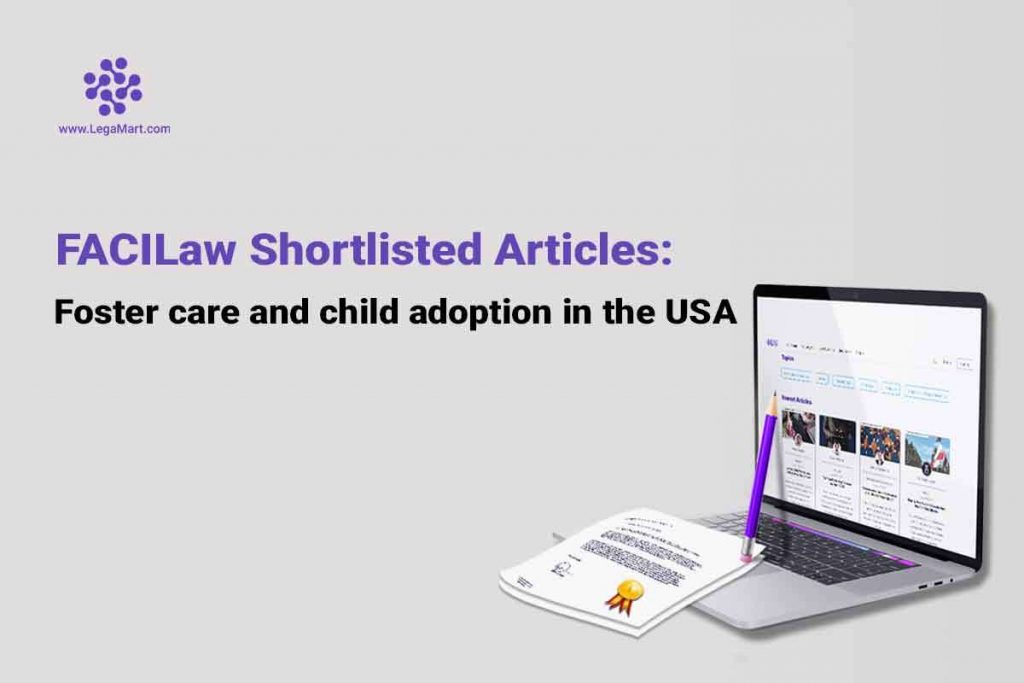This article is written by Musi Floridah
Introduction
International legal instruments all insist on one fundamental concept: the best interests of the child. Every child deserves to be brought up in a safe, stable environment, so every child deserves a family. This inspired the embrace of foster care and child adoption in the United States. Foster parents are temporary caregivers to children who were removed from their homes by child protection services where their parents cannot take care of them.
They take the role of parents and support the child’s psychological, physical or emotional needs. Just as emphasized this is in tandem of the government delivering on the best interest of a child. The primary purpose of foster care is reunification. It gives families the chance and support they need to function healthily.
Foster parents must meet several requirements to become licensed to provide such care. They must be of age, at least 21 years, have space for the foster kid, have their own residence, and be financially stable. On any given day, over 400,000 children are in foster care in America. The average age of a child to be put in foster care is nine years. However, where the state feels reunification is futile, they encourage independent living among young adults.
How one enters the foster care system?

The two main ways children enter the foster care system are through confidential information on suspected abuse or mistreatment or any concerned citizens. An assigned case worker does an investigation to determine the truth of the allegations and whether there is a need for protective services to prevent future harm. If it is determined so, a protective court order is sought from a judge. Upon authorization, the child is removed from the particular environment and is placed under foster care.
The second way a child gets into the foster care system is through the voluntary will of the parent who feels unable to take care of their children. They can also surrender kids with special needs, such as severe disabilities. Once in foster care, the process of permanent placement either through, as earlier mentioned, reunification, adoption, guardianship or permanent custody by a relative.
Child adoption process
Adoption is the process of creating a legal relationship between a child and a parent who was not the birth parent. It can be either international adoption or domestic adoption . The government also allows individuals to care for children who cannot live with their birth parents. A central database allows prospective adoptive parents to access data throughout the nation.
Requirements of foster care adoption
In adopting from foster care, one must remember that the median age for adoption is eight years. Also, put into consideration is that children in foster care have experienced some form of trauma or abuse, hence the need to have parents trained in handling the children’s psychological and emotional needs. However, the cost of adoption through foster care is cost-effective for the adopting parents.
Challenges facing the foster care system
Children in foster care are in poor mental and physical health compared to the general population. They are also in poor health due to their experiences before foster care. It is also noted that even under placement, there is no guarantee that their needs will be met. The change in environment may also increase their psychological and emotional conditions as a change in the environment often entails adaptability mechanisms straining the child’s psychological development. Forming relationships with their new parents may prove to be strenuous too. The continuous placement and displacement of children in the foster care system may also threaten the child’s stability.

Children may also experience continuous or more abuse in their new homes as there is no guarantee that they will be treated better where they go. Some families take them in to receive government and child protection agencies stipends. In as much as the government provides a better environment for the kids, there is no assurance of better treatment by the foster family.
Furthermore, foster care perpetuates the need to find quick solutions for foster kids, such as teenage pregnancies for early marriages or drug and substance abuse. There is also an overreliance on foster care to respond to crises affecting children and their families.
There are also tensions regarding the role of child protection services and the foster care system, as many see it as a way to break up families. In addition, there is a debate about whether it should be child-centred or family-focused.
The future of foster care
To increase the effectiveness of foster care systems, several factors should be interrogated, with some viewing foster care with a family-centred view that involves considering the needs of all the family members. Next, it should be child-centred, where the child’s needs are considered before placement—a community-based approach to keeping in touch with the people close to them. A development-centred approach is where the child’s cognitive, psychological and mental needs are considered during placement. Finally, the cultural-centred point of view is where the child’s social set-up and way of life form part of the consideration during placement.
Finally, the need for a policy framework that protects the needs of children in foster care with the increasing influence of social media, emerging trends and the evolution of the law on issues such as LGBTQ rights needs to be put into consideration.
Uncover the steps and procedures for immigration to different nations, with a focus on Turkey to Norway and US to Portugal, in Legamart’s insightful articles.




